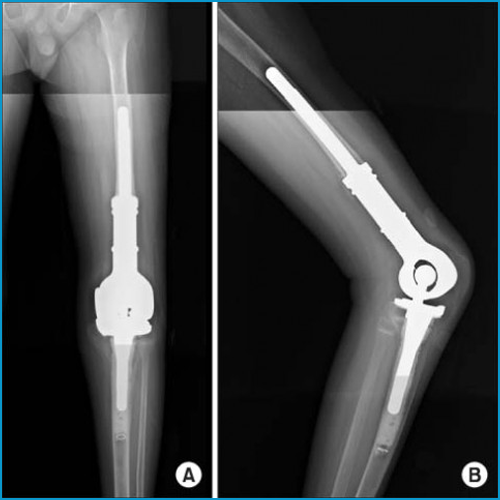
Limb salvage procedure
Limb salvage surgery, also called limb sparing surgery, is a procedure designed to remove cancer—usually bone tumors or bone sarcomas, but also soft tissue sarcomas affecting the body’s extremities—without amputation, and while preserving nearby tendons, nerves and blood vessels so as to give the patient the greatest possible level of function. It is often used along with radiation therapy and/or chemotherapy, and is most commonly recommended for patients whose cancer is spreading slowly.:
During the procedure, the surgeon will remove not only the tumor and affected tissue, but also some surrounding healthy tissue. If part of the bone is removed, it is replaced either with a prosthesis, bone grafts or a bone transplant, after which muscle and soft tissue from elsewhere in the body are used to close the wound. Eventually, the replacement bone fuses with the original bone, allowing the patient to move his or her limb.
In recent years, limb salvage surgery has also been used for patients affected by chronic degenerative bone and joint diseases such as rheumatoid arthritis, as well as patients with acute or chronic limb wounds or those facing amputation due to diabetes.
Conditions Related to Limb Salvage Surgery
Limb salvage surgery is most commonly used in cases for which, in the past, amputation would have been used to stop the spread of cancer from a limb. Usually, the cancers this surgery is used to treat include bone tumors and bone sarcomas, though it is also used for soft tissue sarcomas affecting the extremities. In addition, in recent years limb salvage surgery has been used for patients with chronic infections, rheumatoid arthritis and other degenerative bone and joint disease, and patients facing limb amputation because of diabetes and those with acute or chronic limb wounds.
 179-FB Scheme No.94,Pipliyahana Chouraha,Indore
179-FB Scheme No.94,Pipliyahana Chouraha,Indore 09329245454,09893772745
09329245454,09893772745
